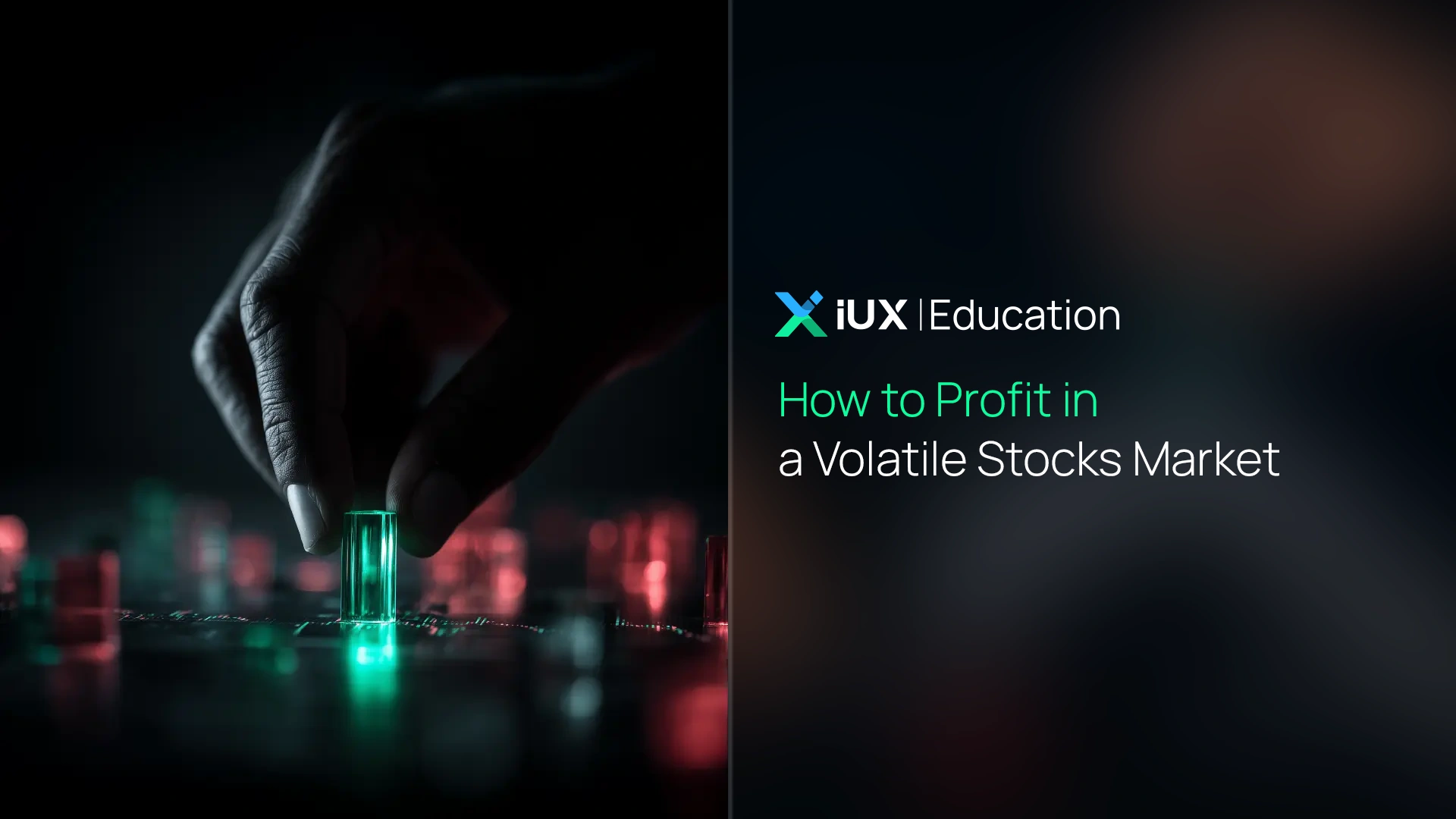CFDs are complex instruments and come with a high risk of losing money rapidly due to leverage. 76% of retail investor accounts lose money when trading CFDs with this provider. You should consider whether you understand how CFDs work and whether you can afford to take the high risk of losing your money.
CFDs are complex instruments and come with a high risk of losing money rapidly due to leverage. 76% of retail investor accounts lose money when trading CFDs with this provider. You should consider whether you understand how CFDs work and whether you can afford to take the high risk of losing your money.

Short-Term vs. Long-Term Gold Trading: Which Strategy is Right for You?
Which Gold Trading Strategy is Better: Short-Term or Long-Term?
Gold has been a highly sought-after asset for centuries, valued for its intrinsic worth and ability to act as a safe haven during times of economic uncertainty. As a highly liquid asset, gold offers numerous trading opportunities, but the key question for traders and investors is whether to focus on short-term trading for quick gains or long-term investing for wealth preservation and steady returns.
Both approaches have distinct benefits and drawbacks, and the best choice depends on your investment objectives, trading experience, and risk appetite. Some traders thrive in fast-paced market environments, while others prefer a slow and steady approach, holding onto gold as a hedge against inflation and currency fluctuations.
This article explores the fundamental differences between short-term gold trading and long-term gold investing, providing insights to help you choose the strategy that aligns with your financial goals.
What is Short-Term Gold Trading?
Short-term gold trading involves buying and selling gold within a short period, typically ranging from a few minutes to a few days. Traders who follow this strategy focus on capitalizing on price fluctuations rather than accumulating gold for long-term value appreciation.
Short-term trading requires a strong understanding of technical analysis, chart patterns, and market trends. It is also influenced by global economic events, news, and geopolitical factors that impact gold prices.
Types of Short-Term Gold Trading
- Scalping involves executing multiple small trades within minutes or hours, profiting from minor price fluctuations.
- Day Trading requires opening and closing positions within the same trading day, avoiding overnight risk. Day traders rely on technical indicators and real-time market data.
- Swing Trading allows traders to hold positions for several days or weeks, capitalizing on medium-term price trends before selling at a profit.
Pros of Short-Term Gold Trading
- One of the key advantages of short-term gold trading is the potential for quick profits. Since gold prices fluctuate daily, traders can take advantage of these movements to generate fast returns.
- Additionally, short-term trading requires less initial capital compared to long-term investing. Traders can use leverage to control larger positions without making a significant upfront investment.
- Another benefit is the reduced exposure to long-term economic risks. Because positions are held for a short time, traders avoid the long-term impacts of inflation, interest rate fluctuations, and global economic slowdowns.
Cons of Short-Term Gold Trading
- Short-term trading requires constant market monitoring and quick decision-making, which can be stressful and time-consuming. Traders must develop strong technical analysis skills and stay updated on market trends.
- Another downside is the high risk involved. Gold prices can change rapidly due to unexpected news events, central bank decisions, or shifts in investor sentiment, leading to potential losses.
- Additionally, frequent buying and selling result in higher transaction costs. Brokerage fees, spreads, and commissions can add up quickly, reducing overall profitability.
What is Long-Term Gold Investing?
Long-term gold investing focuses on holding gold for extended periods, typically months or years, to benefit from its appreciation over time. This approach is often used by investors who see gold as a hedge against inflation, economic downturns, and currency devaluation.
Unlike short-term trading, long-term investing requires patience and a solid understanding of macroeconomic trends that affect gold prices. Many investors use gold to diversify their portfolios and protect their wealth in times of financial instability.
Types of Long-Term Gold Investing
- Physical Gold (Bars or Coins) allows investors to own tangible assets, providing direct exposure to gold’s value.
- Gold ETFs (Exchange-Traded Funds) offer a way to invest in gold without the need for physical storage. These funds track gold prices and are easily tradable on stock exchanges.
- Gold Futures and CFDs (Contracts for Difference) are financial instruments that allow investors to speculate on gold prices over the long term, often using leverage.
Pros of Long-Term Gold Investing
- One of the main advantages of long-term investing is that it requires less active monitoring. Unlike short-term traders, long-term investors do not need to check price movements constantly, making this strategy ideal for those with a passive investment approach.
- Gold is known as a safe-haven asset that retains its value over time. It acts as a hedge against inflation and economic crises, making it an attractive option for investors looking for stability.
- Another benefit is that long-term investing generally has lower transaction costs. Since trades are executed less frequently, investors save on brokerage fees and other costs associated with frequent trading.
Cons of Long-Term Gold Investing
- One of the biggest challenges of long-term investing is the higher capital requirement, especially for those purchasing physical gold. Storing gold securely also comes with additional costs.
- Additionally, returns take longer to materialize compared to short-term trading. Investors may have to wait years for significant price appreciation.
- Long-term investors must also endure price fluctuations over time. Although gold generally maintains its value, it can experience short-term declines that may test an investor’s patience.
Despite the challenges, many investors choose long-term gold investing for wealth preservation, inflation hedging, and stability, while others prefer short-term trading to capitalize on market fluctuations and quick returns. Regardless of your strategy, having the right platform is essential. IUX offers the best of both worlds, providing real-time market data, advanced trading tools, and low-cost execution to support both long-term investors and active traders. Join IUX today and take your investing to the next level!
Which Strategy is Right for You?
Choosing between short-term and long-term gold trading depends on several factors:
- Risk Tolerance – If you can handle market volatility and rapid price changes, short-term trading may be suitable. If you prefer a lower-risk investment with more stability, long-term investing is a better fit.
- Investment Goals – If your objective is to make quick profits, short-term trading offers frequent opportunities. However, if you seek wealth preservation, long-term gold investing is more appropriate.
- Trading Skills and Experience – Short-term trading requires strong technical analysis skills and the ability to react quickly. Long-term investing is less demanding but requires an understanding of economic trends.
- Time Commitment – Short-term trading requires active monitoring, while long-term investing is more passive and requires less daily involvement.
Some investors use a hybrid approach, combining both strategies. They allocate a portion of their portfolio to short-term gold trades while maintaining long-term gold holdings for stability. This method allows them to benefit from market fluctuations while securing long-term value appreciation.
Conclusion
Both short-term and long-term gold trading have their advantages, and the best strategy depends on your financial goals, risk tolerance, and available time for market analysis.
Short-term trading provides fast profit opportunities but requires active monitoring and technical skills. Long-term gold investing, on the other hand, offers stability and protection against inflation but requires patience and a larger capital commitment.
Regardless of your choice, staying informed about market trends, global economic factors, and risk management techniques will significantly enhance your success in gold trading. Whether you choose to trade gold actively or invest in it for the long haul, having a clear strategy will help you maximize your returns while minimizing risks.
Note: This article is intended for preliminary educational purposes only and is not intended to provide investment guidance. Investors should conduct further research before making investment decisions.


